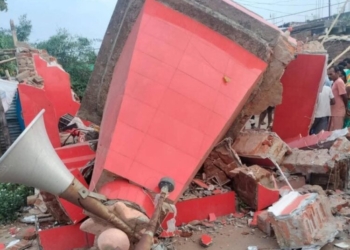While the court or any judicial body may decide based on merits, allowing maintenance activities in such closed units would not just help promoters to save cost and time to restart; the economy will also be benefitted. This is primarily because any such closure leads to loss to the exchequer, rising unemployment, growing imports and increased forex outgo. The sooner these units restart the better for the overall economy.
“Allowing closed companies by court order to maintain machinery is pragmatic. It enables to prevent wear n tear. Court induced closures take time for final decisions and to restart if finally permitted it can restart operations in minimal time. Such practice can be roped in as a mandatory practice for such units to carry out required maintenance work at regular intervals to lessen the damage,” said former steel secretary Dr Aruna Sharma.
Former mines Secretary Balvinder Kumar also echoed Sharma’s view. Kumar said,
“These assets may have private ownership, but these are ultimately national assets.These should not be kept idle. It would be loss to the economy. These assets should be allowed regular maintenance. Also, courts should fast-track such cases.”
A senior economist, requesting anonymity, said the requirement of following such a practice is more pronounced for copper since the metal is crucial for India’s energy transition target. Following the closure of Sterlite’s Tuticorin unit in 2018 that used to contribute to 40 per cent of domestic production, India has become a net importer of the metal from being a net exporter earlier. The trend is likely to have continued for the fifth year in a row in the just concluded FY23 fiscal too.
India consumed 5.63 LT refined copper in FY22. Against this, domestic production was 5.3 LT and imports were at 1.4 LT and exports at 1.1 LT last fiscal. India was a net exporter of refined copper, last in 2017-18, with 3.8 LT exports and 47,000 tonnes imports.
A Niti Aayog-sponsored study by Consumer Unity & Trust Society (CUTS) had earlier found decisions of the Supreme Court and the National Green Tribunal (NGT) in five cases — Goa Mining Case, MoPA airport case, Sterlite Copper plant case,
Sand Mining case and the NCR Construction Ban case caused a huge damage to the economy and suggested the SC undertake comprehensive ex-ante economic impact analyses facilitated by a group of experts including economists, environmentalists, sociologists, among others, to address and adjudicate public interest cases involving economic sensitive matters such as Sterlite Copper.
Sterlite Copper is a major employer in Tuticorin, providing direct and indirect employment to thousands of people. The closure of the plant has had a cascading effect on the local economy, leading to job losses and reduced economic activity.
Various people from Tuticorin benefited by Sterlite Copper have been demonstrating their continuous support.
Providing care and maintenance can also be used to analyse the existing condition and plan to reduce the environmental impact and is the right opportunity to address any outstanding environmental concerns if any. It is important to ensure that any resumption of operations is done in a manner that is environmentally sustainable and respects the rights and health of the local community.
Concerned over growing imports, a parliamentary panel had earlier flagged the need for incentivising domestic capacity addition of the metal, crucial for achieving India’s net zero target by 2070.
Experts say domestic demand is expected to rise by 10-11 per cent in the next two years on the government’s thrust on renewables and electric vehicles. Electric vehicles and renewables are the two crucial components in that transition. The higher consumption, though an encouraging sign for the economy, will come at a huge cost for India, aiming to achieve net zero target by 2070, unless domestic production is ramped up.
India has limited copper ore reserve contributing about 0.31 per cent of world copper reserves. Mining production is just 0.2 per cent of world’s production, whereas refined copper production capacity is around 4 per cent of world’s production. For a country like India, where demand far outstrips the domestic production, little options will the country have but to toe a new geopolitical order arising around copper, in the lines of oil cartel OPEC.
(IANS)















